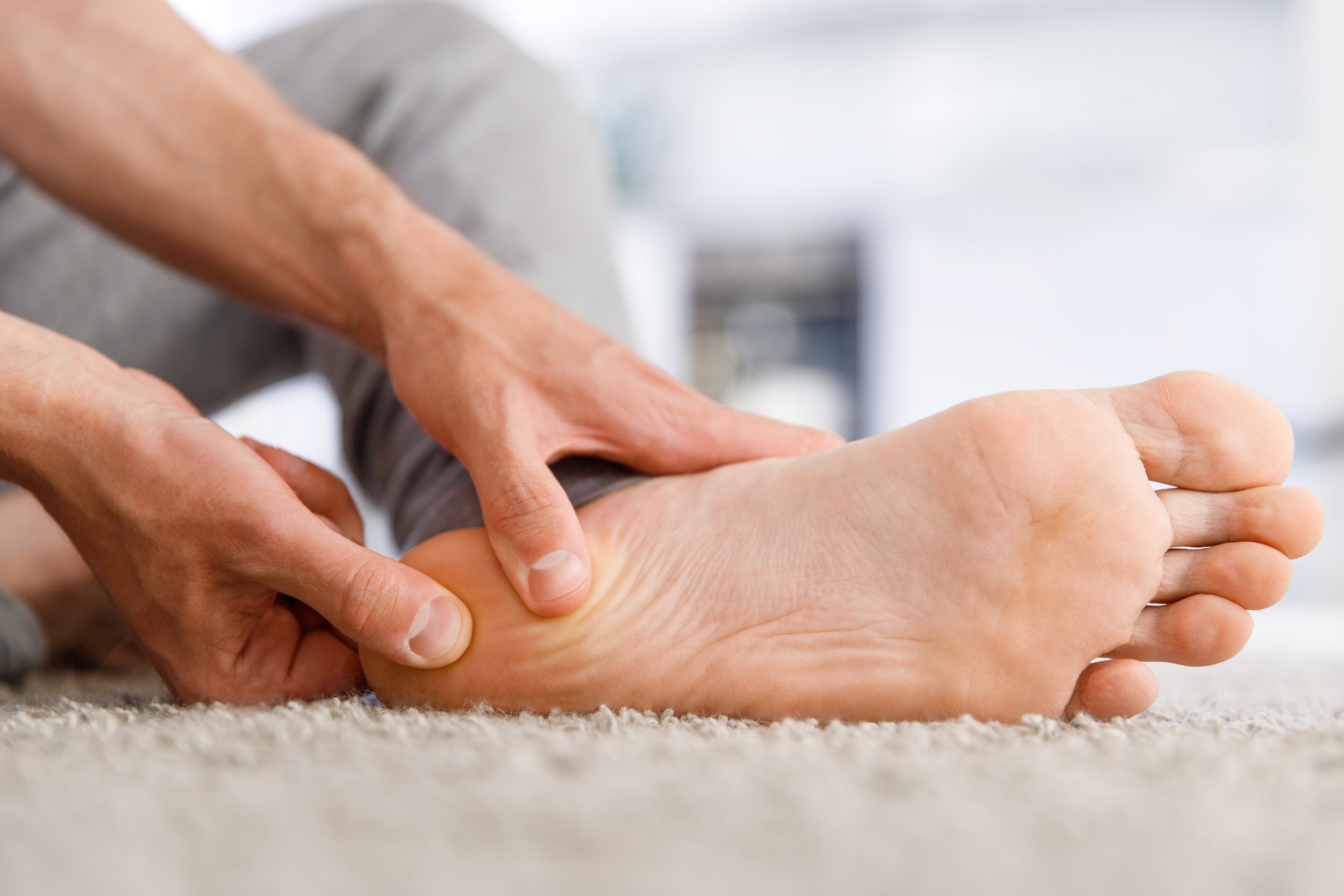Plantar fasciitis is a common condition that causes heel pain, specifically in the plantar fascia, which is a thick band of tissue that connects the heel bone to the toes. It is usually caused by repetitive strain and overuse of the foot, leading to inflammation and micro-tears in the fascia.
The main symptom of plantar fasciitis is sharp or stabbing pain in the heel, particularly when taking the first steps in the morning or after prolonged periods of rest. The pain may subside with activity but can worsen again after prolonged standing or physical activity.
Treatment for plantar fasciitis typically involves a combination of conservative measures.
These may include:
Rest and activity modification: Avoid activities that exacerbate the pain and provide ample rest to the affected foot.
Stretching exercises: Regular stretching of the calf muscles and the plantar fascia can help alleviate symptoms and prevent further injury. Specific exercises recommended by a healthcare professional or physical therapist may be beneficial.
Footwear modifications: Wearing supportive shoes with good arch support and cushioning can help reduce strain on the plantar fascia. Avoid flat shoes or those with worn-out soles.
Orthotic devices: Arch supports or shoe inserts (orthotics) can provide additional support and cushioning to the foot, relieving pressure on the plantar fascia.
Ice and heat therapy: Applying ice packs to the affected area can help reduce pain and inflammation. Heat therapy, such as using a warm towel or soaking the foot in warm water, may also provide relief.
Nonsteroidal anti-inflammatory drugs (NSAIDs): Over-the-counter pain relievers like ibuprofen or naproxen can help reduce pain and inflammation. However, long-term use should be avoided without medical guidance.
If conservative measures do not provide sufficient relief, a healthcare professional may suggest additional treatments such as physical therapy, night splints, corticosteroid injections, or extracorporeal shockwave therapy (ESWT). In rare cases where all other treatments have failed, surgery may be considered as a last resort.
How does physical therapy help heal plantar fasciitis?
Physical therapy plays a crucial role in the treatment of plantar fasciitis by addressing the underlying causes, reducing pain, promoting healing, and preventing future recurrences. Here are some ways in which physical therapy can help heal plantar fasciitis:
Evaluation and personalized treatment plan: A physical therapist will assess your condition, including your foot mechanics, gait (walking pattern), and range of motion. Based on the evaluation, they will develop an individualized treatment plan tailored to your specific needs.
Stretching and strengthening exercises: Physical therapists will teach you specific exercises to stretch the plantar fascia, calf muscles, and other relevant muscles. These exercises help improve flexibility, reduce tightness, and strengthen the foot and lower leg muscles, promoting better support and stability for the affected area.
Manual therapy: Physical therapists may use hands-on techniques like massage, myofascial release, and joint mobilization to relieve pain, improve tissue flexibility, and enhance joint mobility. These techniques can help reduce inflammation, increase blood flow, and promote healing.
Footwear and orthotic recommendations: A physical therapist can assess your footwear and provide recommendations for shoes with proper arch support, cushioning, and stability. They may also suggest orthotic devices, such as custom shoe inserts or splints, to provide additional support and alignment to the foot.
Biomechanical assessment and correction: Your physical therapist can analyze your walking and running mechanics to identify any abnormalities or imbalances that contribute to your condition. They can then provide guidance and corrective exercises to improve your biomechanics, which can reduce stress on the plantar fascia.
Modalities for pain relief: Physical therapists may use modalities such as ultrasound, electrical stimulation, or laser therapy to help manage pain and reduce inflammation in the affected area. These modalities can complement other treatment strategies and promote tissue healing.
Activity modification and education: Physical therapists can educate you on proper body mechanics, footwear choices, and techniques for preventing plantar fasciitis recurrence. They may also guide you in gradually returning to physical activity or sports while minimizing the risk of reinjury.
Check out these exercises for plantar fasciitis: https://youtu.be/oPA7K8JSyOA
Physical therapy is a comprehensive approach that addresses the underlying factors contributing to plantar fasciitis, promotes healing, and helps restore normal foot function. The duration and frequency of physical therapy sessions will vary depending on the severity of the condition and individual response to treatment.
Similar conditions to plantar fasciitis.
There are several similar conditions that can cause foot pain and may be mistaken for or coexist with plantar fasciitis. These conditions include:
Heel Spurs: Heel spurs are bony outgrowths that develop on the underside of the heel bone. They often coexist with plantar fasciitis and can contribute to heel pain. However, heel spurs themselves may not always cause symptoms, and the pain is primarily due to inflammation of the plantar fascia.
Tarsal Tunnel Syndrome: Tarsal tunnel syndrome occurs when the tibial nerve, which runs along the inside of the ankle and into the foot, becomes compressed or irritated. It can cause pain, tingling, or numbness in the heel and sole of the foot, similar to the symptoms of plantar fasciitis.
Achilles Tendinitis: Achilles tendinitis is the inflammation of the Achilles tendon, which connects the calf muscles to the heel bone. It can cause pain and stiffness in the back of the heel and may coexist with plantar fasciitis. However, the pain associated with Achilles tendinitis is typically located higher up the heel and may worsen with physical activity.
Stress Fractures: Stress fractures are small cracks in the bones of the foot, often caused by repetitive impact and overuse. They can cause localized pain in the heel or other areas of the foot and may be mistaken for plantar fasciitis. However, the pain from stress fractures tends to be more constant and may worsen with weight-bearing.
Bursitis: Bursitis is the inflammation of the fluid-filled sacs (bursae) that cushion the joints. In the foot, retrocalcaneal bursitis or infracalcaneal bursitis can cause pain in the back of the heel or underneath the heel, respectively. The symptoms can overlap with those of plantar fasciitis.
Nerve Entrapment: Nerves in the foot can become entrapped or compressed, leading to conditions like Morton's neuroma or nerve impingement. These conditions can cause pain in the ball of the foot, toes, or heel, which may be similar to the pain experienced with plantar fasciitis.
It's important to consult a healthcare professional for an accurate diagnosis, as the treatment and management strategies may differ for each condition. Sometimes, multiple factors may contribute to foot pain, and a comprehensive evaluation can help determine the appropriate treatment approach.
It's important to consult a healthcare professional for an accurate diagnosis and individualized treatment plan for plantar fasciitis.



